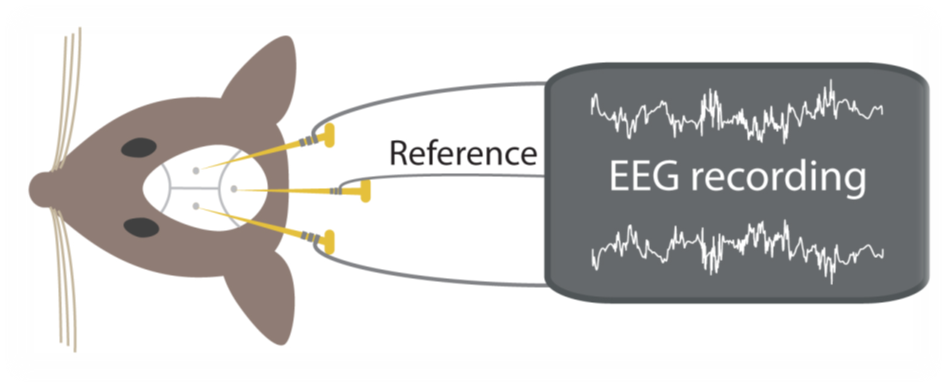Navigation auf uzh.ch
Navigation auf uzh.ch
For more than 150 years, sleep has been studied extensively, but very little is known about the genetic components underlying its complex structure. Nevertheless, evidence has begun to accumulate suggesting that single genes can dramatically affect sleep architecture. For example, a forward screen in Drosophila identified the potassium channel mutation shaker as having a dramatic sleep phenotype when mutated (Cirelli, Bushey et al. 2005), and similar results have been documented in mice (Douglas, Vyazovskiy et al. 2007). Given the fact that potassium channels broadly regulate membrane potential in neurons (Johnston, Forsythe et al. 2010) other ion channels might also be important key players for sleep. However, much remains to be discovered.
Our main interest is to understand which other ion channels are important for proper sleep function and furthermore, how they might regulate general brain activity. To answer this question, we developed a straightforward method allowing us to screen in vivo for specific “sleep genes” in a relatively short time. But the screen is only the first step; we are further characterizing the sleep-specific phenotypes of those channels and hope to be able to model their network function in the whole brain.
To reduce the time needed to establish a knockout model for the characterization, we are currently working on a viral based method in collaboration with the Institut für Labortierkunde of the University of Zurich. The aim is to generate animals that overexpress or silence endogenous genes temporally and in tissue-specific fashion. These techniques provide us with the tools necessary to study the genetics of sleep.

Figure 1: Basic setup for EEG recording in Mice. Two parietal EEG electrodes (2mm anterior to lambda and 2mm laterale to the midline) are referenced to an electrode over the cerebellum. Additionally, EMG (electro-muscle-gram) is recorded simultaneously (not shown here). The raw signal is pre-amplified (factor 2000) and filtered (High-pass filter: -3dB at 0.016Hz, Low-pass filter: -3dB at 40Hz) and stored with a resolution of 128Hz.